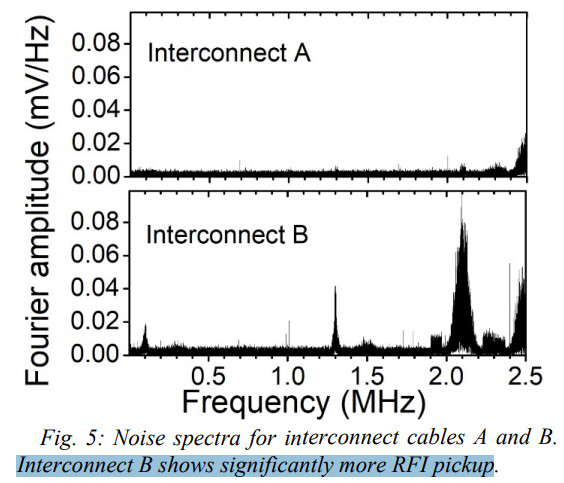I read the paper because I’m interested in differences in cables.(thanks for the link)
But you need to read further to understand what’s going on here …
However, the electrical measurements conducted here indicate that noise levels may be one
determining factor of sonic performance. The measurements also show that characteristics such as resistance and frequency response, that naïve consumers may focus on, are irrelevant for distinguishing HEA interconnect cables.
In other words : the test subjects could only distinguish between the two interconnect cables because one of them had bad shielding and picked up RFI. They even measured it :

You know why only one cable picked up RFI and not the other one? He compared a $500 balanced XLR cable to a $50 unbalanced RCA cable ![]()
(A) Virtuoso higher-end (retail price ~$500 for 0.5 m) 0.5 m long balanced XLR-to-XLR cable with
polytetrafluoroethylene insulation
(B) a MonsterCable11 Interlink 400 entry-level (retail price ~$50 for 2 m)
2 m long RCA-to-RCA cable with polyethylene insulation
The noise could actually even come from the amp outputs, not the cable itself.
I mean, I’m no scientist but this “study” really seems flawed to me. He did not prove that cables make a sonic difference (assuming they’re both correctly shielded), he just proved that balanced XLR cables are better at removing noise and that noise levels indeed make a difference … which needed no proving since everybody knows this already.
Sorry long post :-p